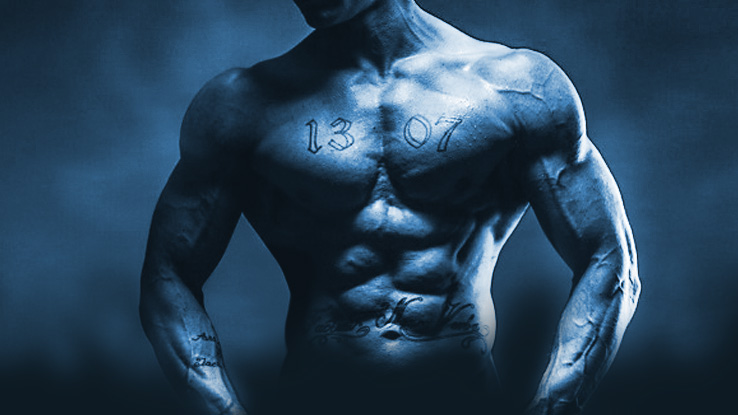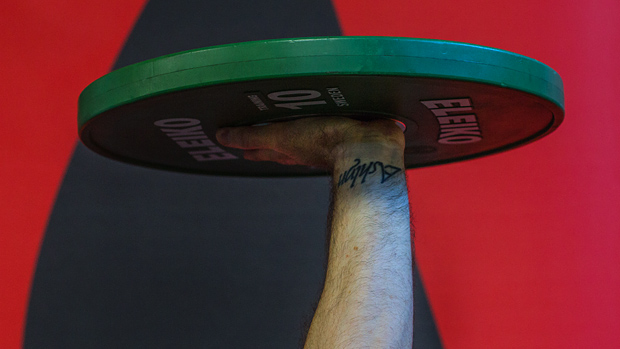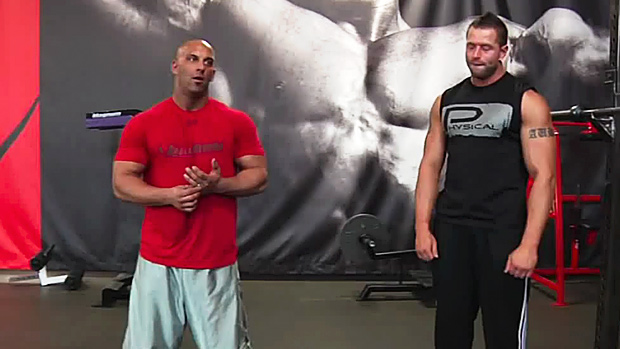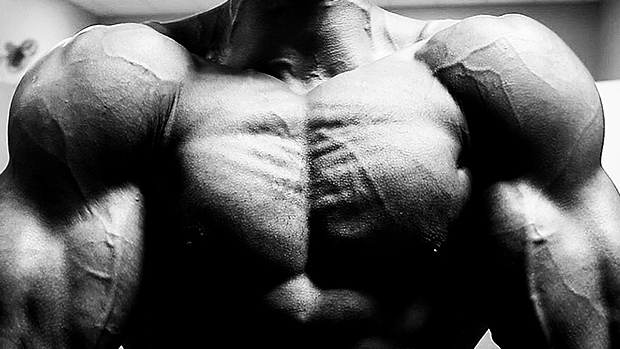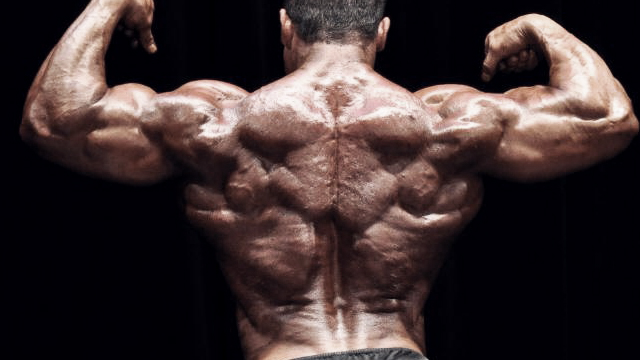A recent article in The New York Times highlights a study in which a group of dudes slept in a metabolic chamber that was kept at a mildly chilly 66 degrees. After four weeks of sleeping at 66 degrees – a practice known among biohackers as "cold thermogenesis" – the men had almost doubled their volume of metabolically active brown fat, experienced an increase in insulin sensitivity, and even burned a few more calories throughout the next day.
I sat perusing this article with great interest since I was reading it after having emerged from a three-minute cold shower and donning a vest and pair of compression shorts filled with ice packs after having woken up from a pleasant night's sleep at 66 degrees, which is the exact temperature at which I keep my bedroom. So as a bit of a cold thermogenesis geek, this newsflash spoke to my heart and I figured I'd share some of my experiences from the trenches.
First, cold thermogenesis doesn't require full body submersion in order to get the fat-burning (and other) benefits, so quit shuddering while thinking back to those high school sports days of getting shoved into a full-body ice bath. Now that we've cleared that up, let's look at the different levels of cold thermogenesis (CT) and some of the benefits at each level.
At the lowest level, we have "casual" intensity. This would be like sitting in a 66-degree room with minimal clothing. Cooled off, but not cold, per se. At this level, there's already a mild increase in calorie burn as your autonomic nervous system kicks in to increase body temp and there's a slight increase in your respiration. This is a very small increase, but here's the thing: this level is so easy it can be done for hours and hours a day, and over time, the calories burned add up. However, if you're looking for real fat burning and body recomposition, you need to step up the intensity.
This would be like sitting in a 50-60 degree room while only wearing shorts (and a bra, for women). Most people who haven't built up any cold-adaptation probably couldn't do this for long without shivering. This is the realm of very significant brown fat formation, otherwise known as brown adipose tissue, or "BAT."
Brown fat is found in nearly all mammals and is probably an evolved mechanism that allows us to survive in the cold. Human babies have a lot of BAT to keep themselves warm since they can't yet shiver, but as we age we tend to lose our brown fat. Most of your BAT is found around the collarbones, spine, near the kidneys, and around the major blood vessels, where it can directly heat the blood.
BAT is embryologically related to muscle tissue, and on the cellular level is shown to have a large number of mitochondria, thus the brown coloration. Mitochondria are often called the "power plants" of the cell and are involved in producing ATP for energy and movement. Mitochondria are really important – and for more than just muscle function, size, or strength.
Whenever you get cold enough, your brown fat "turns on." It begins to burn calories from either glucose or fat. Unfortunately, no one's yet demonstrated a consistent ratio of glucose vs. fat burned at the various intensities. However, diet, level of cold-adaptation, and other individual variables probably factor in. There's also an inverse relationship to levels of BAT and obesity: the more obese you are, the less brown fat you tend to have.
What's more, as you continue to engage in cold thermogenesis, you can create more brown fat and increase your brown fat stores. If you don't yet have much BAT built up, a process known as "skeletal muscle uncoupling" involving the protein sarcolipin works to heat you up in lieu of brown fat, so your muscles work on the cellular level to generate heat until you build up your BAT stores.
How long does it take to build up your BAT? One study showed an increase after only 10 days when subjects sat in a 60-degree room for 6 hours a day. Another study showed an increase after 6 weeks of 2-hour a day exposure (that group also lost over 5% body fat in the experiment, without diet or exercise!) And of course, we also have this most recent study that showed that sleeping in a 66-degree room allowed for an increase in BAT after a month.
Here's an important factoid: The activation of brown fat is often called "non-shivering thermogenesis," but this has created the misconception that shivering turns off brown fat. This is wrong, which leads me into the highest level of cold thermogenesis: hardcore intensity.
Hardcore intensity always involves shivering, which burns massive amounts of calories. When tested using indirect calorimetry, shivering was able to triple calorie burn, and that was just with subtle, low-level interval shivering, also known as "shiver surfing" (shiver surfing is similar to interval training, but with shivering instead of exercise). Now I can already imagine what you're thinking: "Shivering? I'll be miserable!" It's actually not so bad, if you follow these three tips:
- Fingers, toes, ears, and nose. The fingers, toes, ears, and nose have a great number of sensory nerves for cold. Guess where you first get frostbite? That's why the fingers, toes, ears, and nose are "warning signs" for dangerous levels of cold exposure when out in nature. So if your fingers, toes, ears and nose get cold, you feel cold. But by using this strategy, you can trick the system: keep your fingers, toes, ears, and nose warm, and you'll feel warm. So if you wear gloves, socks, and a hat, you can go all the way into a shivering zone and feel much warmer than you might think.
- Occupy your mind. Keep your attention on what you're doing, not on the cold. This could be another advantage of using something like a cold vest or compression gear packed with ice. You can wear these while checking your email or watching TV, like I do. The vest covers the supraclavicular and scapular BAT-heavy zones and the pants assist with my previous day's workout recovery, along with giving me added cold thermogenesis. This works best if you start off your day with a cold shower.
- Cold adaptation. As you become cold adapted, you'll barely notice colder temps. Moving into the shivering state will be almost enjoyable. You'll be able to walk outside in the middle of winter wearing hardly any clothes and feel fine. At this level, you'll probably have an extremely boosted metabolic rate and a high level of BAT.
Also note that, despite what many "experts" have claimed, shivering does not turn off brown fat. In fact, shivering probably increases BAT faster than any other method. What's more, shivering can increase levels of the hormones adiponectin and irisin.
Let's start with adiponectin. The benefits of adiponectin seem almost too good to be true. Basically, it burns fat. In animal models, it increases metabolism without increasing hunger. It can increase mitochondrial density and efficiency in human skeletal muscle and this may account for the post-workout benefit of ice baths; in fact, many proponents of CT have reported increases in strength and/or muscle.
But the biggest benefit of adiponectin may have nothing to do with how you look. Adiponectin is being studied as a possible cure for cardiovascular disease. When injected into test subjects, adiponectin has been shown to radically increase insulin sensitivity, relax blood vessels, and directly reduce cardiovascular inflammation. Amazingly, when someone has a heart attack, their body releases huge amounts of adiponectin in a desperate attempt to quickly heal the damage.
In addition, adiponectin has been shown to induce apoptosis – intentional, programmed cell death – in certain types of cancer tissue. In a study published last summer, women were able to increase their levels of adiponectin by 9% over 10 weeks by increasing the amount of tomatoes in their diet. Sound impressive? Consider that CT has been shown to increase adiponectin by 62% after only two hours. Such a huge increase in adiponectin may explain how even experienced lifters can experience strength gains from CT.
Also of major interest is the newly discovered hormone irisin, which is released from muscle tissue during CT. Irisin is also released during strenuous exercise, but at a rate 4-5 times slower than with CT. What does irisin do? It's been shown to lower myostatin levels, and of course, lower myostatin means bigger muscles! Irisin is also involved in the "browning" of white fat. That means that hardcore intensity CT can cause white fat to start to function more like brown fat. Irisin can also lengthen telomeres, which gives it a bit of an anti-aging effect, which potentially ties CT to longevity, too.
So the various levels of CT, from casual to moderate to hardcore, can burn massive amounts of calories, increase glucose uptake and insulin sensitivity, increase RMR, reduce systemic inflammation, probably help kill off dangerous cancer cells, help boost the immune system, help enhance sleep, help recover from workouts and directly help build muscle, and increase longevity.
Quick cold showers can give you some of the benefits of CT, like a release of nitric oxide and increased blood flow and core cooling, especially post workout. But when it comes to BAT formation, a cold shower probably isn't going to do much. Both intensity and volume are needed to induce the more profound BAT-forming benefits of CT. Cold showers just aren't long enough, or probably not even intense enough. Taking 15-20 minute cold showers daily might activate BAT to a significant degree, but how long that BAT stays active after leaving the shower would probably depend on the room temp and your level of cold adaptation.
Your body will simply generate too much heat, too fast, for the effects of the shower to "sink in." Remember, you probably have to enter some level of shivering, even if just briefly, to maximize fat burning, as well as boost adiponectin and irisin and to speed up the formation of new BAT, as well as the browning of WAT. Cold showers should probably be viewed as a nice, accessible, convenient adjunct to more powerful methods of CT, like ice baths, minimally-dressed cold weather exposure, or daily use of CT devices like vests and pants.
There's a popular trend in some CT circles that exposing yourself to just a little bit of cold, or just slightly cooler temps, or just slightly cooler water, will slowly and gradually bring about the same benefits of higher intensity CT. This is almost certainly wrong. It's like comparing someone taking a slow, casual stroll versus someone doing all-out sprints. Both are burning calories, but one is burning a whole lot more for a lot longer after that session ends.
But to be fair, it depends on what your goals are, and to some degree, your level of existing cold adaptation. If you merely want a minimal, temporary boost in metabolism, or perhaps the refreshing wakefulness from a catecholamine spike, an uncomfortably cool shower will probably get the job done. But readers of T Nation probably want to maximally burn fat and build muscle. This means getting a noticeable chill on. The fastest way to do this is to bump up the intensity and go into some level of near-shivering or shivering; in other words, hardcore intensity. Not much, just enough.
The only point of diminishing returns is that if you go too intense and do too much CT too fast, you could potentially get cryoburn on your skin, or in extreme cases, hypothermia if you're careless. Also note the benefit of the boosted immune system is probably hormetic in nature, and this means that just like any mild hormetic stress, you'll get the most benefits by gradually building it up over time.

From moderate intensity on up, CT will increase insulin sensitivity. This probably works by several methods. BAT will suck up and burn glucose for fuel and adiponectin will also greatly increase insulin sensitivity of skeletal muscle. Under the right conditions, CT can more easily allow for glycogen supercompensation of the muscles and this can be done far more frequently when paired with diet and exercise than by just using diet and exercise alone.
How many T Nation readers have tried some sort of cyclical diets, designed in part to induce glycogen supercompensation? Try a hardcore CT session after a carb re-feed and experience what happens. One of the common experiences I hear, especially among athletes and lifters, is how pumped they often feel after a CT session. This is probably in large part due to the enhanced insulin sensitivity and glucose uptake during and after the session.
This effect should induce nutrient partitioning away from fat and into the muscles. Combine this with specific diet and exercise and you can really manipulate muscle glycogen. Note that at hardcore intensity, your blood glucose load (BGL) can sometimes temporarily go up. This is similar to how BGL can shoot up from HIIT or heavy lifting when the liver works via glycogenolysis to increase BGL in prep for the workload. As such, under higher intensities, CT can directly burn off muscle glycogen.
Here's a quick hack for those who engage in anaerobic power endurance workouts – the type where you feel leaned out the next day when you wake up and the type that really depletes glycogen. Go low-carb for a day or two and then do a hardcore CT session that last night for an hour or so. You'll often wake up feeling the same way as you do after those glycogen-depleting workouts (but without the DOMS).
Interestingly, it's been shown that keeping the skin at a temp between 32-41 degrees for at least an hour can induce fat-cell apoptosis of the underlying subcutaneous fat without damaging the skin. This is a form of spot-reduction of fat.
This was first discovered in children who developed "popsicle panniculitis." The fat under their cheeks would undergo a type of inflammation called panniculitis from the constant cold exposure of eating popsicles. The cheek fat would then die off and be reabsorbed, and even as adults, they would still have dimples!
There are now cosmetic procedures designed to "freeze the fat away" via mechanical means by holding cold devices against the stomach, for example. The trouble is, this therapy only works a few millimeters in depth at a time and it takes weeks or even months for those dead fat cells to fully reabsorb and disappear.
Spot reduction should probably be viewed as a nice, fringe benefit, but not a concrete, intentional goal of CT since even at best, results will be minimal and secondary compared to the overall, whole-body fat burning effects of cold thermogenesis. After all, if you're walking around at 20% body fat, what visual difference will a few millimeters of fat removed from your gut make? But for those who are close to having visual abs or cutting for a show, then CT spot reduction could make a significant difference in appearance.
There are direct and indirect methods by which CT could help build muscle and strength. The best indirect method is via enhanced sleep.
If there's one universal benefit one hears about CT, it's the enhanced sleep, rest, and relaxation it brings. This is probably at least in part due to CT's ability to mimic the effects of melatonin by lowering body temperature and activating BAT, which is exactly what melatonin does, and was my original intention when I started sleeping with a room temp of 66 degrees. This enhanced sleep effect will only happen if you do your CT sessions in the evening or night (early morning sessions probably won't help your sleep that night via body temp reduction, though they may help by resetting circadian rhythm imbalances).
The direct method by which CT could help induce muscle strength and size is via adiponectin and irisin. Adiponectin increases insulin sensitivity and can help pull more nutrients into the muscle. It also increases skeletal muscle mitochondria. And as mentioned earlier, irisin can probably lower mysostatin. At the very least, CT could probably help maintain muscle while cutting. Rather than restricting calories, you could instead use CT liberally.
You should know that in the cool-sleep study, all the beneficial metabolic enhancements of sleeping in a cool room were completely undone after four weeks of sleeping at 81 degrees, and in fact, the men then had less brown fat than after the first scan. This same effect has been shown in other studies, too. So if you're going to delve into this strategy, be forewarned, using cold temps for a hot body should probably be viewed as a permanent biohack.

